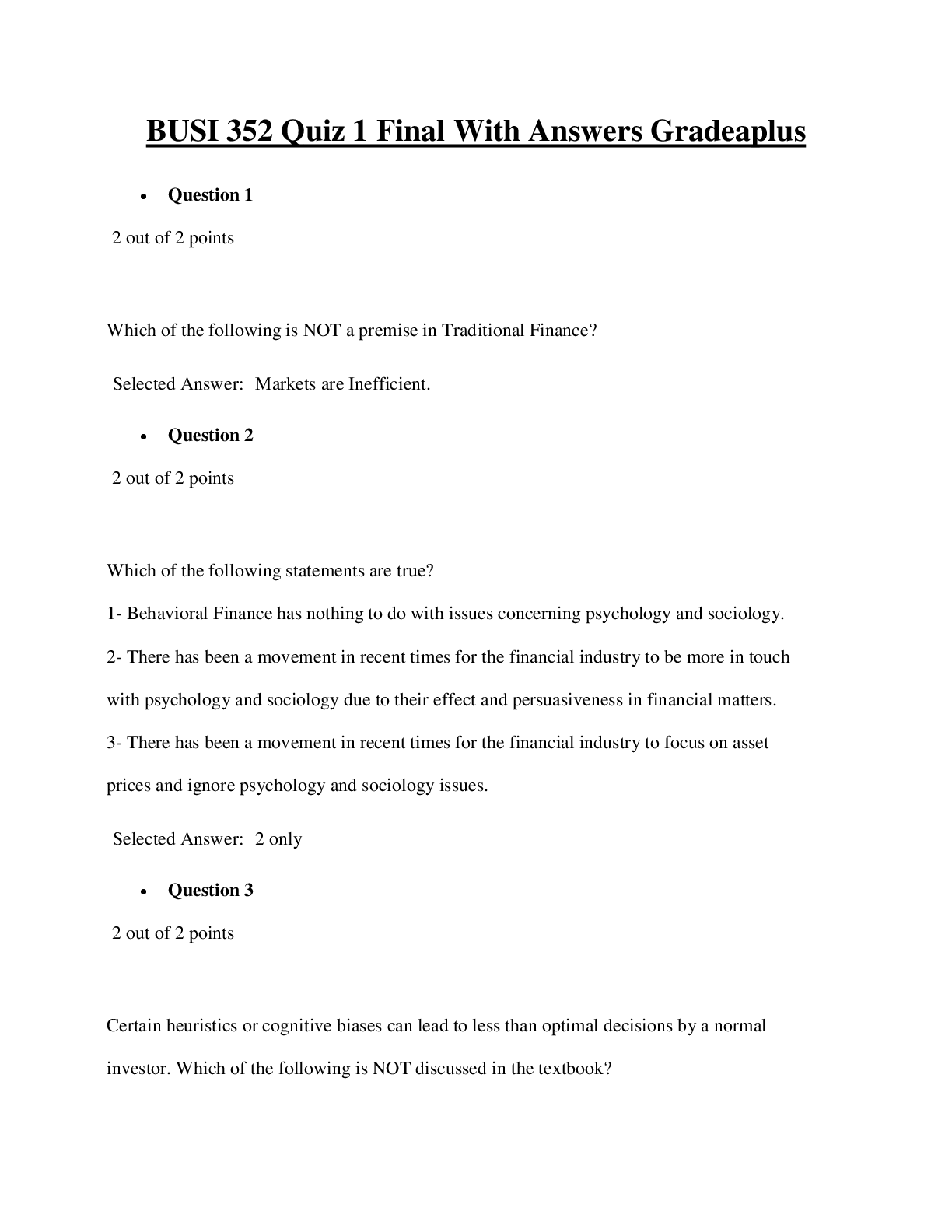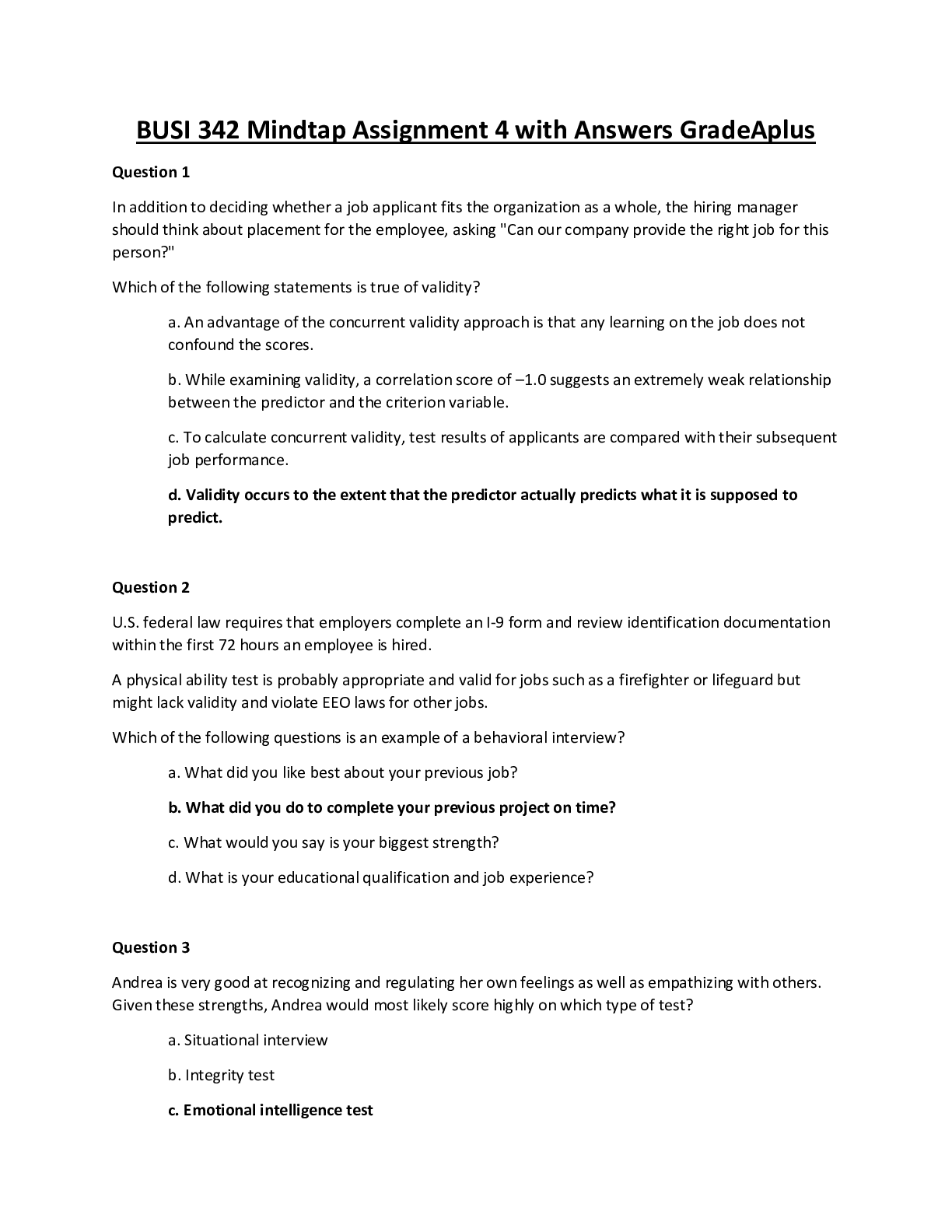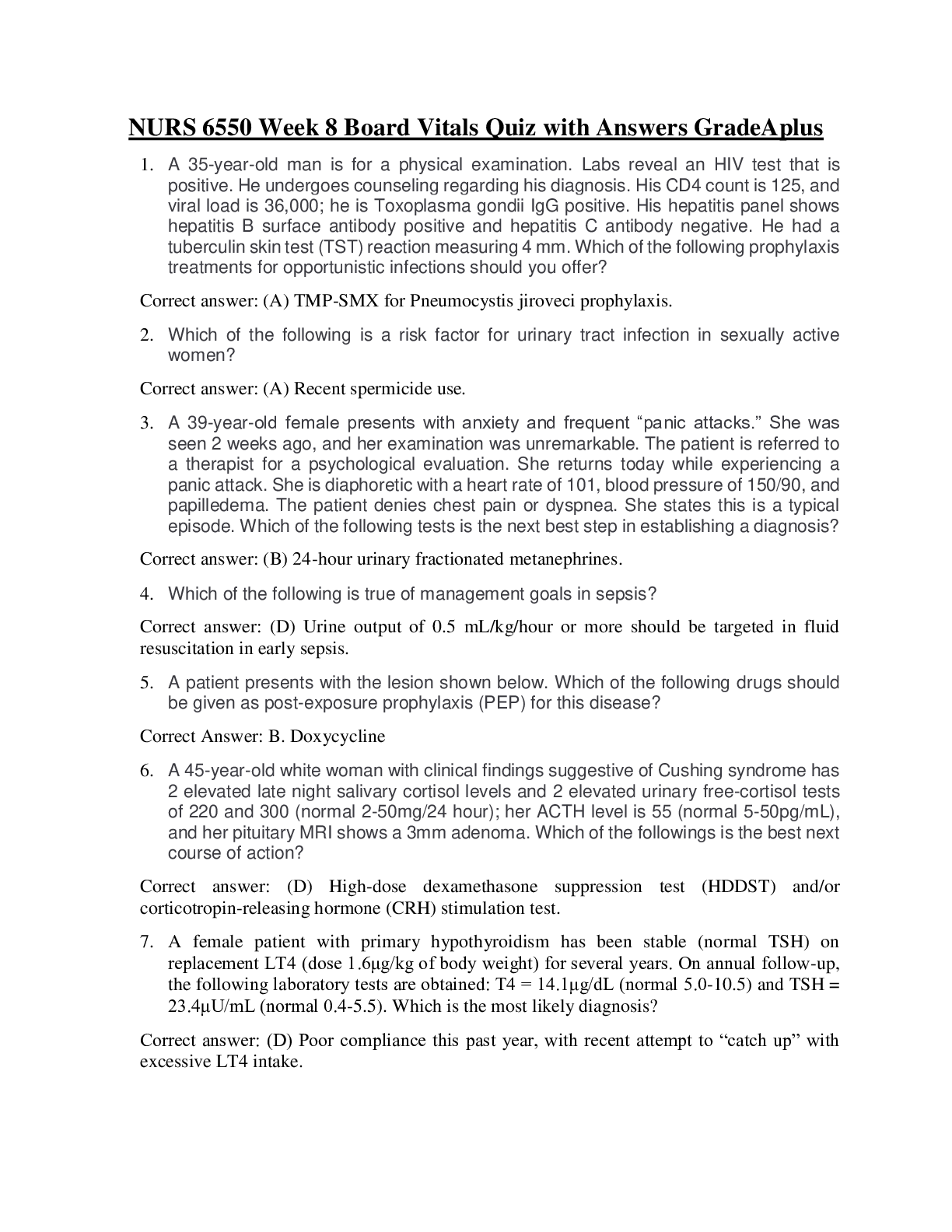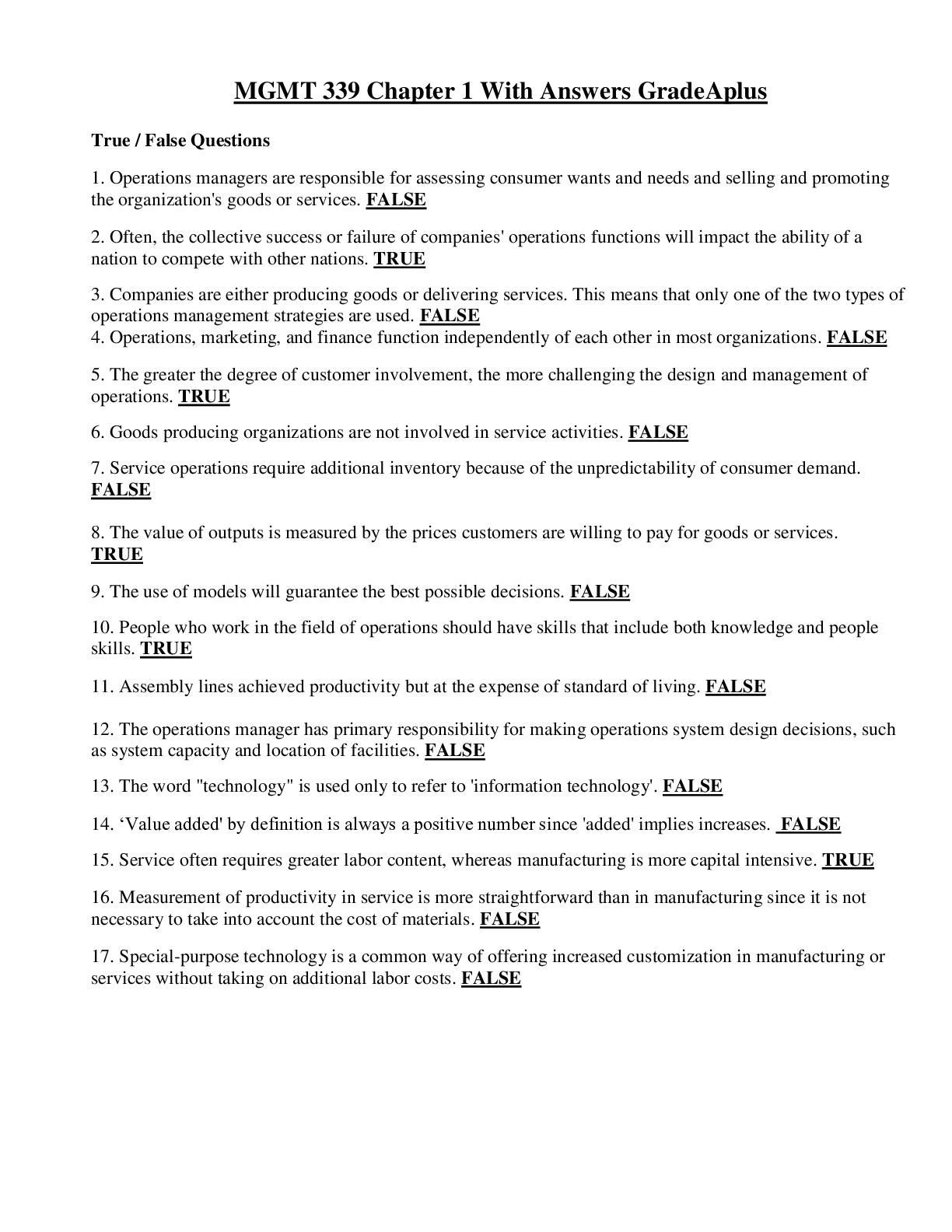BUSI 352 Quiz 1 Final With Answers GradeAplus
Document Content and Description Below
• Question 1 2 out of 2 points Which of the following is NOT a premise in Traditional Finance? • Question 2 2 out of 2 points Which of the following statements are true? 1- ... Behavioral Finance has nothing to do with issues concerning psychology and sociology. 2- There has been a movement in recent times for the financial industry to be more in touch with psychology and sociology due to their effect and persuasiveness in financial matters. 3- There has been a movement in recent times for the financial industry to focus on asset prices and ignore psychology and sociology issues. • Question 3 2 out of 2 points Certain heuristics or cognitive biases can lead to less than optimal decisions by a normal investor. Which of the following is NOT discussed in the textbook? • Question 4 2 out of 2 points Which of the following are NOT components of “active listening?” • Question 5 2 out of 2 points Justin Case is a well-known financial planner in your area. His clients rave about how great he is and after meeting him, you understand why. While describing him to your friend Gary, Gary wanted to know what was so great about financial planners in general. You responded with the following statement “One of the most important qualities a professional financial planner brings to the client/planner relationship is: ________________.” • Question 6 2 out of 2 points Which of the following are consistent with the Humanistic Paradigm? 1- The majority of Humanistic theories view clients as experts on themselves. 2- There needs to be a professional distance between the client and advisor where the advisor should stay close to discussing numbers and data with the client. 3- The alliance between the counselor and client is extremely important for humanistic counselors and is the basis of the treatment or plan of action. • Question 7 0 out of 2 points Which of the following are true about “why” questions? 1- “Why” questions are always the best questions to ask. 2- While the “why” questions are tempting and may help understand the client’s motives, the “why” question may be ill-advised because it could have limited benefit for the client. 3- A “why” question could place the client in a position of having to justify what was done, and that could put the client in a defensive posture. • Question 8 2 out of 2 points Bob Bothersome has been a client of yours for many years. During that time, Bob has been rude to both you and your staff on numerous occasions. He has screamed at you and used profanities in front of your staff and other clients. He has also had tantrums and even thrown things. You have tired of working with Bob and want to terminate your relationship with him. Which of the following is true? • Question 9 2 out of 2 points You have been working for an investment firm in the United States and have decided that you would like to add more credibility to your practice. As a relatively new financial planner, which of the following professional credentials would provide you with the most credibility since it is the oldest and best known? • Question 10 2 out of 2 points Which of the following is the best description for Behavioral Finance? • Question 11 2 out of 2 points Planners must only use facts in the financial planning process. It is very important that assumptions are not used. • Question 12 2 out of 2 points Personal financial planning is the comprehensive proccess of formulating, implementing, and monitoring financial assets as part of an integrated plan that guides an individual or family to achieve financial success. • Question 13 0 out of 2 points “Passive listening" involves which of the following components? 1- The listener is thinking about what to say in response, which hampers listening. 2- Communication rests on one speaker. 3- Listening in a normal social setting, such as a sermon. 4- The listener screens out some information. • Question 14 2 out of 2 points When communicating with a client, which of the following is NOT true? • Question 15 2 out of 2 points Which of the following are basic premises in Behavioral Finance? 1- The Behavioral Asset Pricing Model applies. 2- Investors are normal. 3- Markets are inefficient. [Show More]
Last updated: 2 years ago
Preview 1 out of 6 pages

Buy this document to get the full access instantly
Instant Download Access after purchase
Buy NowInstant download
We Accept:

Reviews( 0 )
$5.00
Can't find what you want? Try our AI powered Search
Document information
Connected school, study & course
About the document
Uploaded On
Feb 17, 2020
Number of pages
6
Written in
Additional information
This document has been written for:
Uploaded
Feb 17, 2020
Downloads
0
Views
142


























